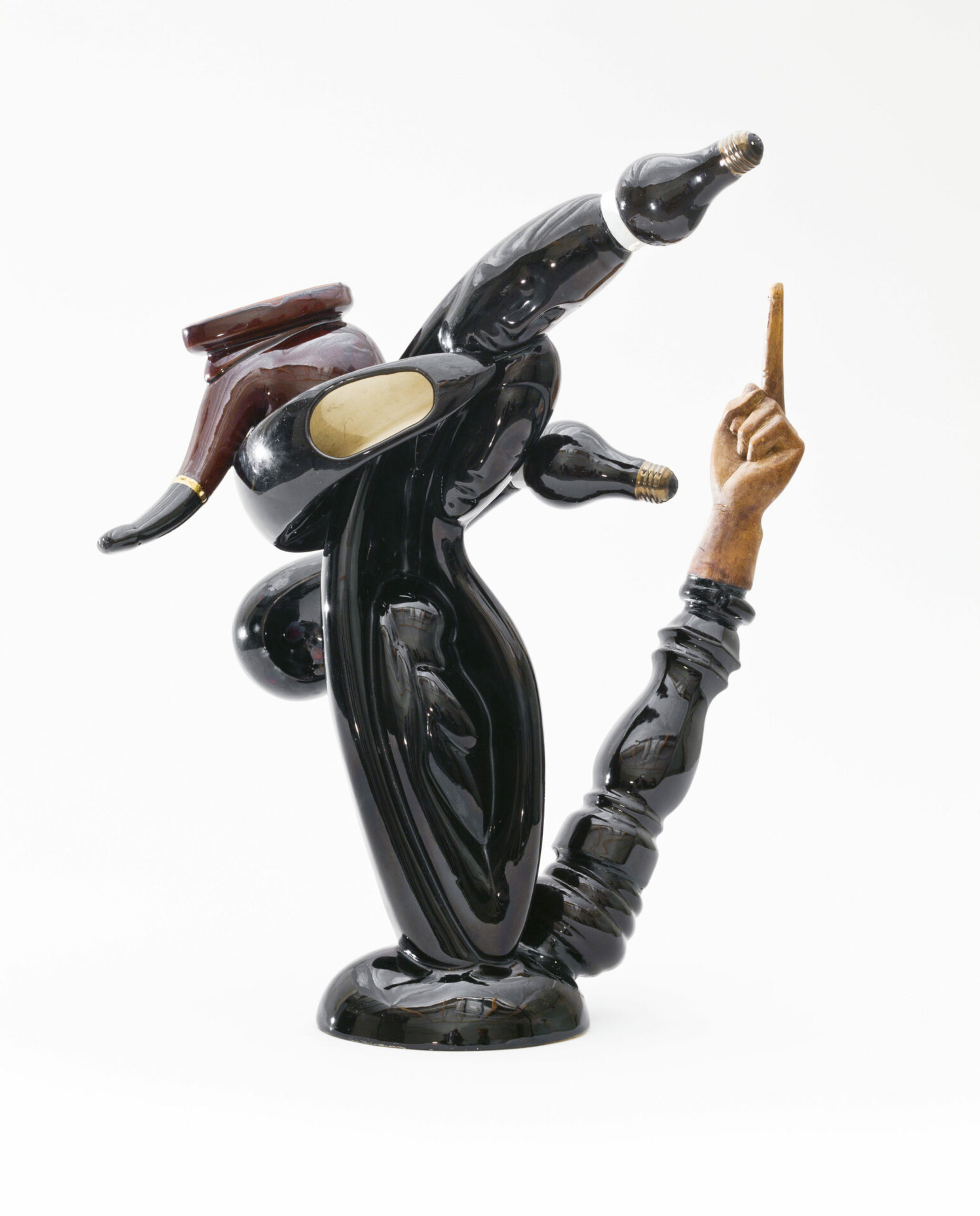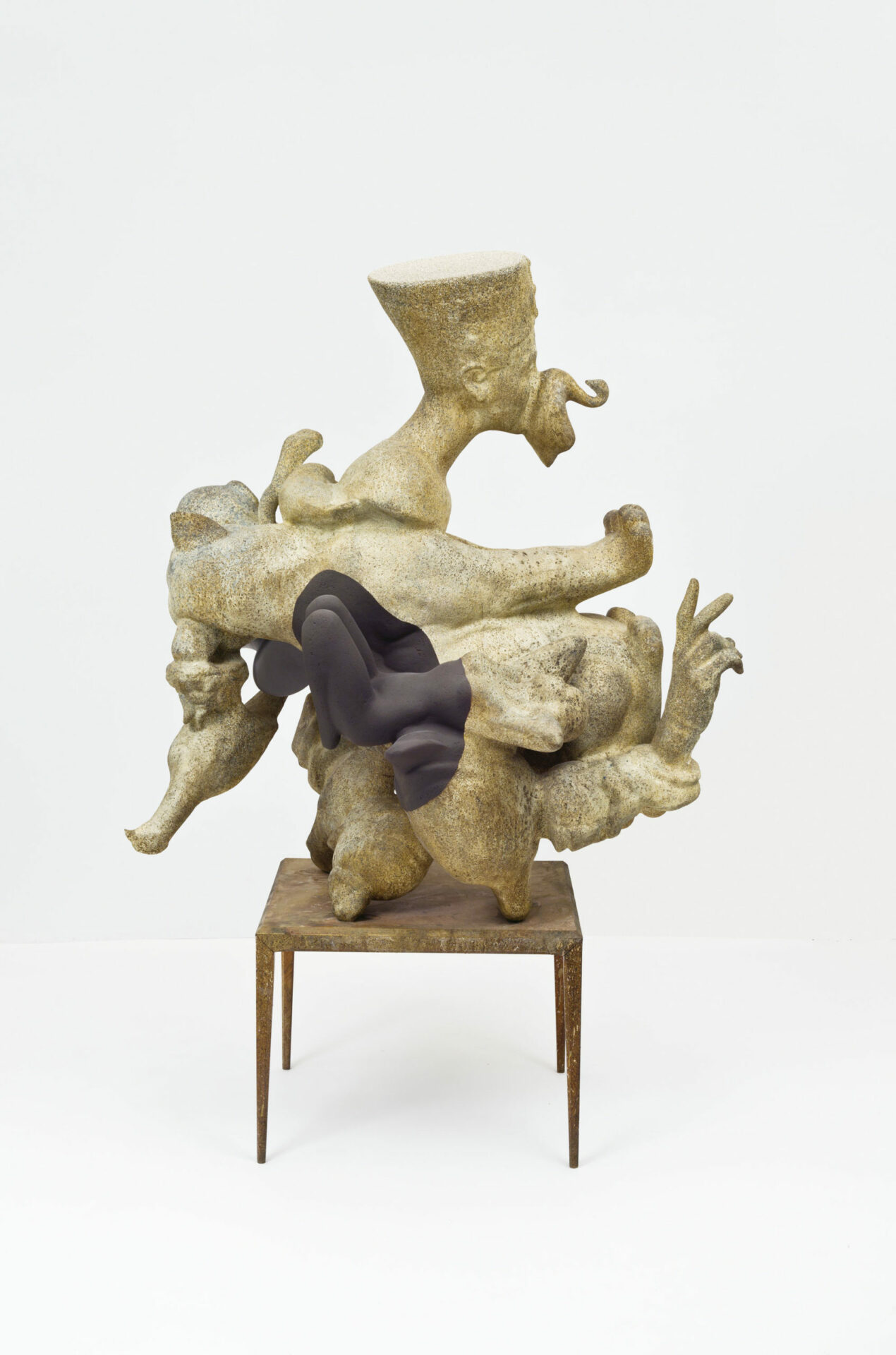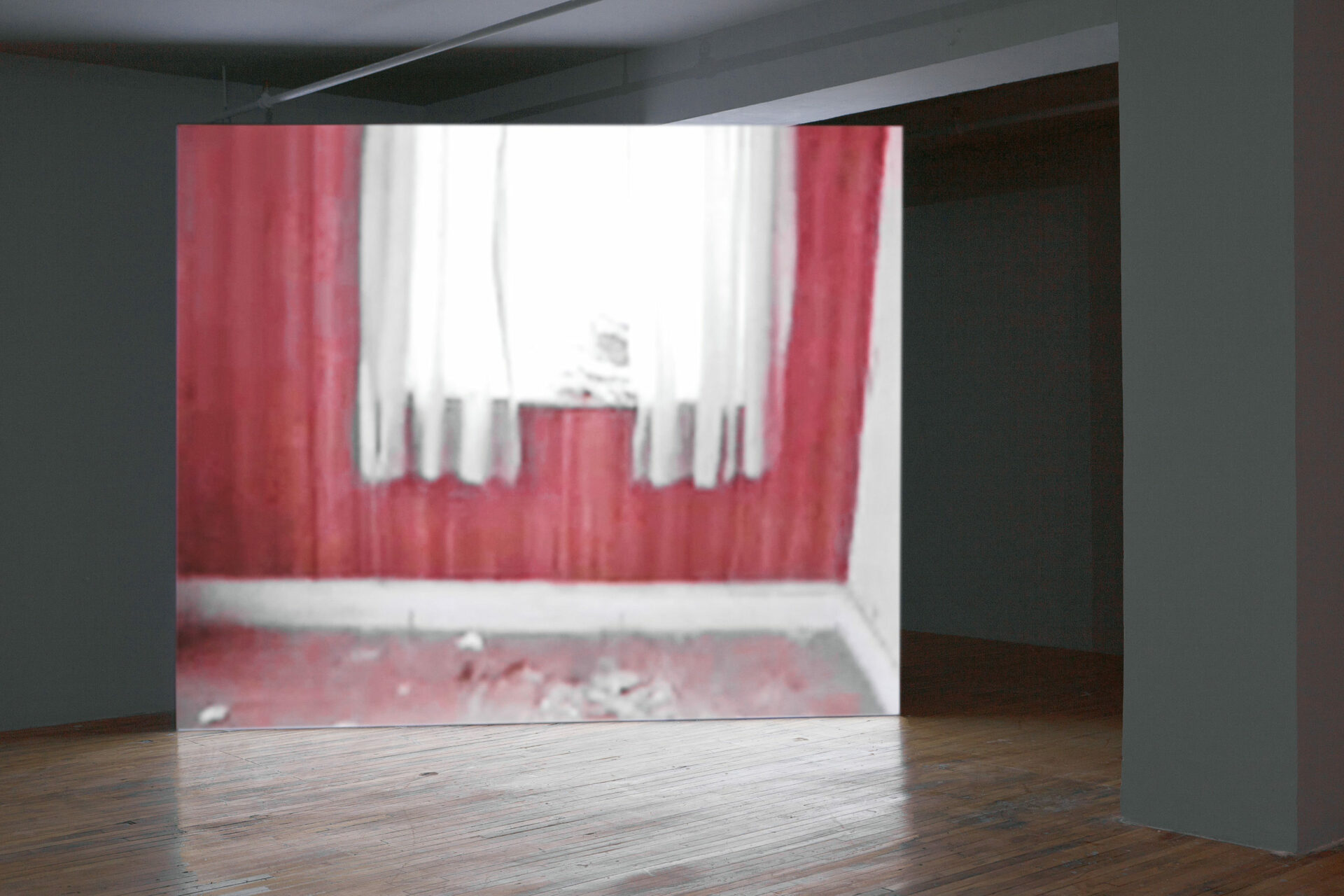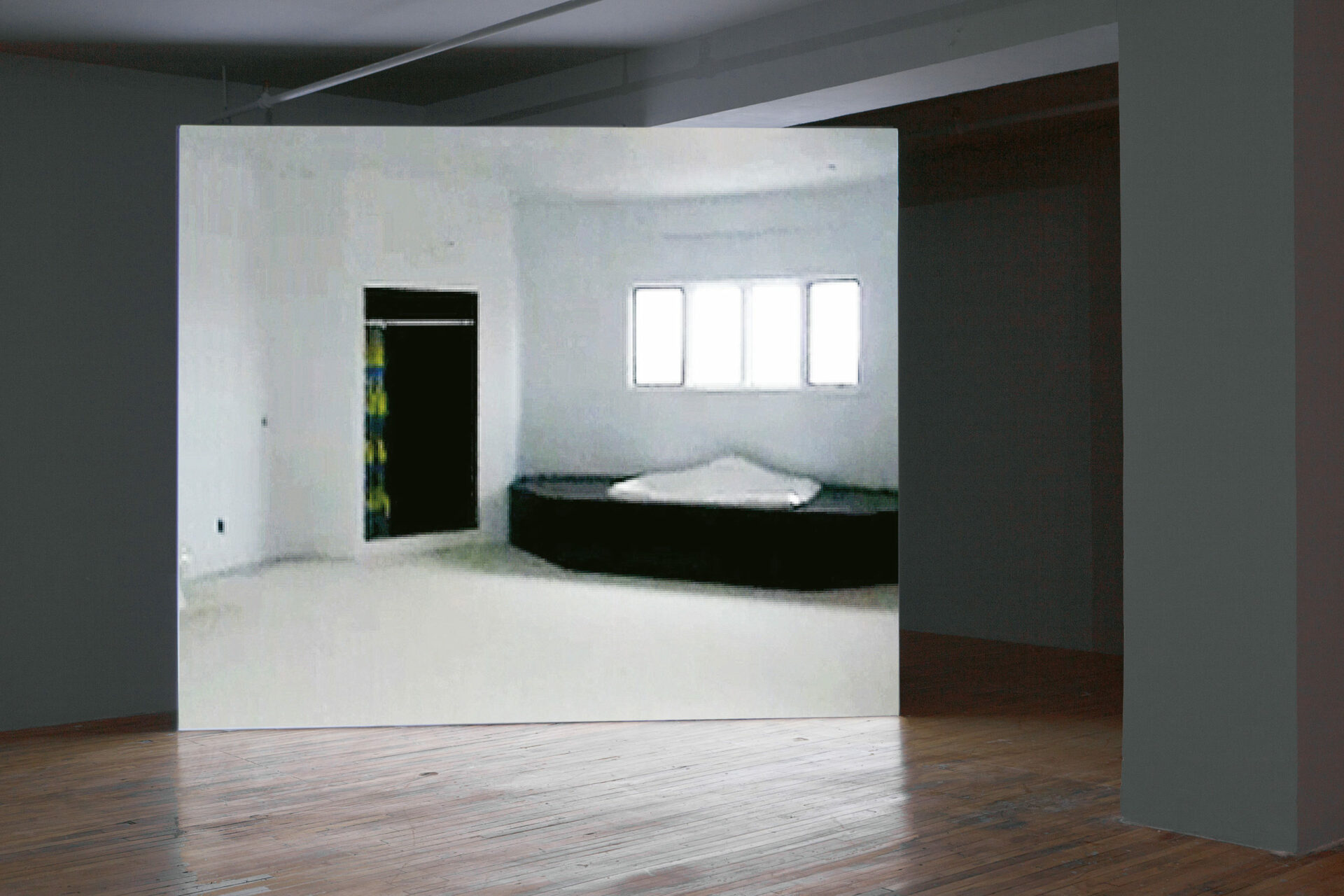
Western thought functions according to an epistemological, political, and phenomenological divide that pits subject against object. The use of computer technologies within artistic practices, however, has largely disrupted this state of affairs. Although subject and object continue to function as key notions, recent art has radically altered their meaning. The metaphysical and signifying paradigm that once determined the subject/object divide has been replaced by an algorithmic paradigm deploying digital and economic logic. Therefore, to reflect on animate objects in recent art implies that one consider how computer technology has undermined the subject/object dichotomy either by displacing subjectivity itself or by reasserting the very “objectness” of objects. The modalities of this new paradigm are numerous and include the subordination of the analogic to the digital, the animism and serialization that prevail in the process of effacing the singular, and the morbid absence of the subject in the staging of the object as a ruined and solitary entity.
Lacking subject or object, interiority or exteriority, everything becomes a modular surface, a superficial and pragmatic modulation, a plastic operation that is determined by a digital code that only involves thresholds.
This essay seeks to explore several artworks in light of these new perspectives on the object, in the face of the virtuality of the digital; that is, in the face of our current state of isolation. My purpose is to observe how the object is a determining factor in today’s art given the demater-ialization resulting from computer technology within cognitive capitalism.
Firstly, current “analogical” practices (especially painting) aestheticize and absorb digital logic without relying on electronic or computer devices. This is true for both sculpture and painting, in which computer technology may well play a role even when computers or electronic apparatus are not used directly. In this manner, the pictorial object develops and indeed betrays immaterial logic. Examples of such can be found in Benoit Blondeau’s explorations of pixelization and digital sampling, or in the architectural forms of Magalie Comeau that, in part or accidentally, call to mind video game design or modelling software such as Autocad.

photo : Guy L’Heureux, permission de |
courtesy of the artist
& Parisian Laundry, Montréal
Collection de Lonti Ebers

photo : Guy L’Heureux, permission de | courtesy of Parisian Laundry, Montréal

Many of Valérie Blass’s sculptures also seem to follow in this vein, most notably through the stark juxtaposition of popular synthetic mater-ials and readymades, expressed in mischievous yet classical sculptural language. Although for most works Blass does not use electronic or computer devices, her use of repetition and clustered textures and forms create a sense of malaise that is partly due to their computerized “look.”1 1 - Incidentally, several works presented at the Musée d’art contemporain de Montréal during the winter of 2012 recall the video game Katamari Damacy. Kenneth McKenzie Wark analyzes this game and demonstrates how the analogical can be captured by the digital. See “Analog Spirit Becomes Digital Code,” Gamer Theory, section 78 (Cambridge, Massachusetts: Harvard University Press, 2007). At first glance, Blass’s sculptural practice can be read as a kind of backward-glancing modernism that references the avant-gardes in general and Duchamp in particular. However, on a deeper level, her practice is more perverse and subversive for how it appropriates now trivial computer practices and integrates them within a non-digital practice. The discontinuity of computer technology thus espouses a plastic character that can take on artistic forms — a discontinuity that constitutes modularity, in a non-linear and non-historical usage that relies on digital code. What Blass does with great skill is to choose from a menu of popular objects that share a common denominator — signifying or non-signifying form — and transform them into a cut-and-paste aggregate. Lev Manovich’s observations are pertinent in this regard: “New media objects are rarely created from scratch; usually they are assembled from ready-made parts. Put differently, in computer culture, authentic creation has been replaced by selection from a menu.”2 2 - Lev Manovich, The Language of New Media (Cambridge, Massachusetts: MIT Press, 2001), 124. In this way, Blass’s works recall the cluster of non-differentiated data on the internet and thus a kind of (qualitative) devaluation in favour of quantity.
Computer-based clustering and reproducibility also play a role in Maurizio Cattelan’s All, a retrospective installation presented at the Solomon R. Guggenheim Museum in New York in 2011. All parodies the very idea of retrospective exhibitions by displaying an overabundant and plural cluster that is violently totalizing, not to say totalitarian. The installation brought together most of Cattelan’s works (except for his performances, which were represented in the exhibition by large-scale photographs). Cattelan’s objects were suspended at the heart of the Guggenheim in such a way that visitors would progressively discover the enormous, Dantesque character of the installation as they ascended the spiralling walkways leading from floor to floor.

Solomon R. Guggenheim Museum, New York, 2011.
photo : David Heald © Solomon R. Guggenheim Foundation
In the foreground of the project’s conceptual “wiring” is the tension between the process of conceptualizing objects and that of reifying them. Put in other terms, it seeks to abolish the difference between concept and object in a gesture analogous to abolishing the rift between object and subject. This abolition is expressed in the manner in which the objects are displayed: between falling and suspension, they comprise a tangible series of hyperlinks that form a monstrous and systemic mobile. In a final analysis, one wonders what stops the visitor, the embodiment of subjectivity in this case, from actually entering into the work.
Secondly, by having recourse to the process of automation, computer technology gives rise to a new kind of animism. Be it concrete or virtual, hardware or software, the automaton machine inspires wonder, for it is treated as a living, fetishized object, capable of sustaining new modes of fantasy (in art, one might think here of the automaton machines of Jean-Pierre Gauthier). In computer-based contexts, programming and serialization, which are characteristic of algorithmic pragmatics, both contribute to the process of automation: here, subjects and objects are equivalent as they submit to the imperatives of digital code; subjects and objects are serialized without any mediating subjectivity. All such practices afford the computer-produced object an autonomy and flow that feed a new mode of animism.
In this animism, the object becomes subject as much as the subject becomes object. Here again, the subject/object dichotomy is undermined: “‘The chronic hyperactivity of certain regions of the brain that comes into play in social thinking processes’ can… make us see spirits where none exist, even in ‘animate objects’… This ‘mirror effect’ helps us explain why we attribute human traits to our computer so easily and, conversely, computer traits to ourselves.”3 3 - Nicholas Carr quoting Jason Mitchell in “À propos des risques de laisser la frénésie s’emparer de notre âme,” Nouveau projet, no. 1 (2012), 76. The automaton machine assembles subjects and objects while deleting them.

photo : permission de | courtesy of the artist
& Jack Shainman Gallery, New York
There is a Disney-like quality to the automation and the animation of objects — the animated table that Marx uses to exemplify commodity fetishism in Das Kapital will no doubt spring to mind. The magic of sampling and the related process of string concatenation are also Disney-like, as one can glean from the following reflections by Walter Benjamin on Mickey Mouse: “Property relations in Mickey Mouse cartoons: here we see for the first time that it is possible to have one’s own arm, even one’s own body, stolen… [Mickey] disrupts the entire hierarchy of creatures that is supposed to culminate in mankind.”4 4 - Walter Benjamin, “Mickey Mouse,” in Selected Writings, trans. Rodney Livingstone, et al. (Cambridge, Massachusetts: The Belknap Press of Harvard University Press, 1999), vol. 2 (1927 – 1934), 545. If subject and object mutually annul one another in the process of automation, they also forfeit any singularity they may possess, for they can now be serialized.
Serialization clearly concerns a loss of singularity and flexibility, a loss of the capacity for error, which is an essential fact of life.5 5 - See Michel Foucault, “Life: Experience and Science,” in Michel Foucault: Aesthetics, Method, and Epistemology, vol. 2 of Essential Works of Foucault, 1954 – 1984, ed. James D. Faubion (New York: The Penguin Press), 465 – 78. Moreover, it implies reification when it is imposed onto living things. As a result, by means of a reversal, the animated subject becomes an object and loses something of its singular life, its “soul.”
For its part, the human body is also transformed into an animated object as subjectivities become integrated into networks in which the body is nothing more than an image. Controlled and sterilized, the body can thus be serialized. The work of Vanessa Beecroft illustrates well this rather noxious transformation of animated subject into animated object — that of pornography, which is essentially an object of autonomous exploitation (for a subjectivity that is in a state of agony). Here, the body is transformed into a mannequin-like state or into a (hardware) platform: between automaton, a naked life, and an object of spectacle, it bears witness to a dark process of dehumanization, even if such a process is undertaken under the guise of luxury, overabundance, and excess.
Thirdly, in cases in which the animated object effaces the subject, there arises an absence that can become artistic material. Thus, the animated object is deprived of the subject, and this cataclysm is often treated as a vacuum, as a strange kind of aspiration. Magalie Comeau depicts this very process of staging in Le vertige de l’organe à habiter sur le vide (The Organ’s Vertigo from Living on Emptiness), an exhibition mounted at Art Mûr in the winter of 2012. Here, objects become the subjects of images as Comeau’s paintings recall works by Francis Bacon (un)sited in Sims-like6 6 - The Sims is a popular simulation game distributed by Electronic Arts since 2000. Twelve versions of the game exist. The objective is to manage the life and needs (both physical and psychological) of a human character that dwells in a domestic setting. From a visual point of view, the game is presented in semi-isometric perspective. Thus, one sees from above, from a “third-person” vantage point. Ultimately, The Sims is much like an automated dollhouse. The reader can find a large amount of information on this subject on the internet. houses, stripped of subjectivity — works that position the viewer in an exploded, optically fibrous, and entomological7 7 - This metaphor is quite rich for understanding the functions of networks, be they comprised of bees or ants. One need only think here of Pierre Lévy and the concept of swarm intelligence, or of Bernard Stiegler’s reflections on anthropods. vantage point: an organization without a body.

photos : Guy L’Heureux, permission de l’artiste | courtesy of the artist

This absence or vacancy afforded by the object can also give rise to the simultaneous disappearance of subject and object, another variation of their rupture; in this case, the former becomes a spectre and the latter a ruin. The leitmotiv here is that of morbidity. A similar absence of subject and object occurs in Patrick Ward’s Monologue, shown at the Centre des arts actuels Skol in the winter of 2011. In this chain of videos, the viewer observes scenes of unknown abandoned architecture through the gaze of an anonymous avatar.
The same can be observed in American suburbia: a sense of absence (of absent subjects) pervades such sites where the presence of “things” takes centre stage. Suburban spaces call to mind something akin to ruins, ruins bereft of any derelict or abandoned quality and without temporality; ruins not in a metaphysical sense, but rather ones resembling virtual, computerized objects, produced by numbers engendering repetition without difference, security, and control by the elimination of chance. The object is animated at the cost of its singularity, and it ideally triumphs over corruptibility. This is precisely what is at stake in a study on contemporary suburbia led by Jason Griffiths: “Conventional images of emptiness imply a physical absence or decay; here in suburbia we found the opposite. This profound emptiness [is] bizarrely enhanced by the very richness of suburbia… There is a listless presence of objects that seem rarely used but regularly maintained.”8 8 - Jason Griffiths, Manifest Destiny (London: Architectural Association, 2011), 4. The same could be said of the bodies in Beecroft’s works.
Whether the object is represented by means of digital encoding techniques in non-digital artistic practices, or whether its animist character is emphasized in automaton machines, or it is simply abandoned to ruin, the object becomes an animate object not by way of any virtual means, but simply in and of itself. In this process, it withdraws itself into the subject as it annuls their relation. Ultimately, one must pay heed to this event in order to think the object anew in contemporary art.
[Translated from the French by Eduardo Ralickas]
